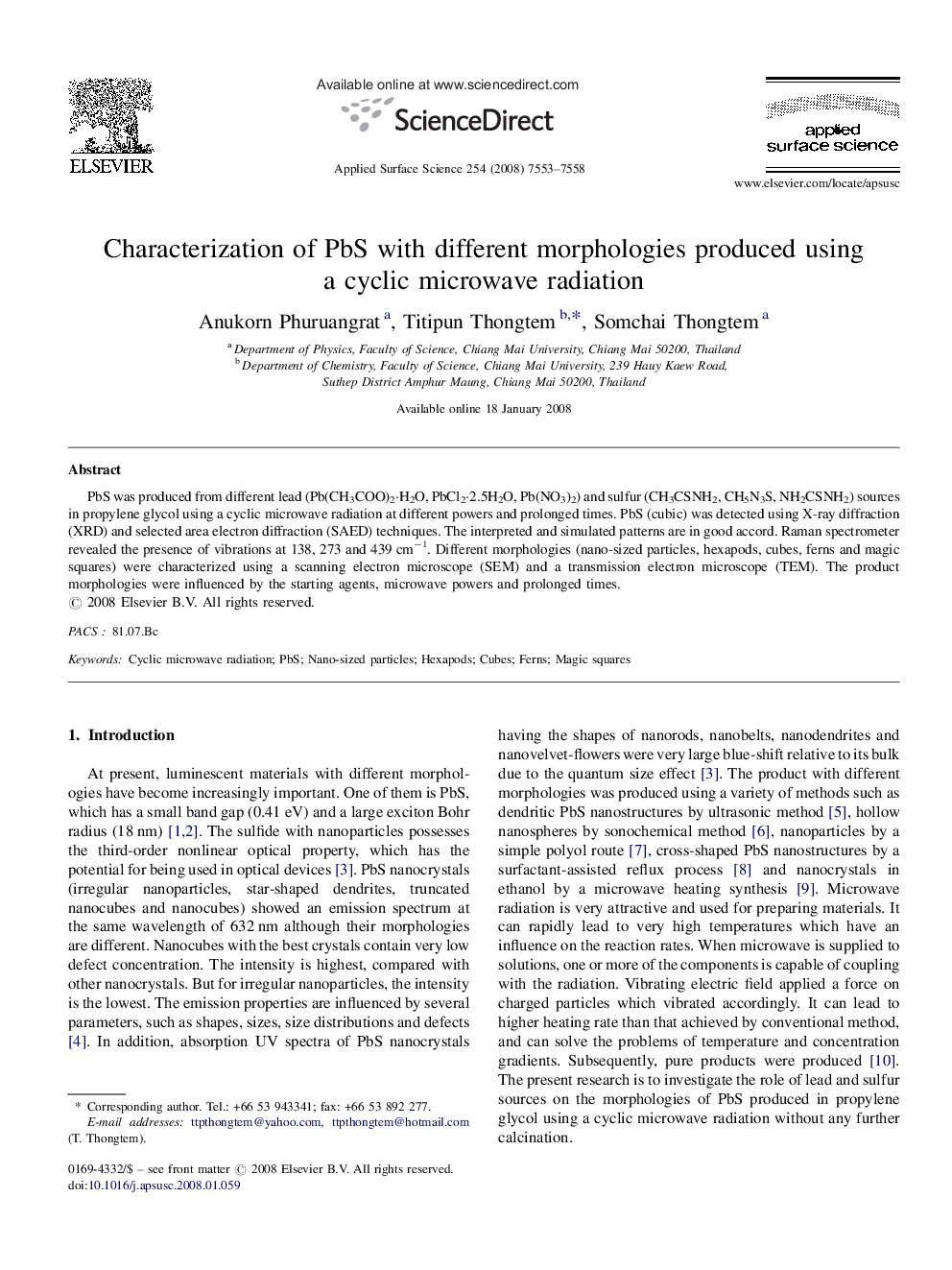| Article ID | Journal | Published Year | Pages | File Type |
|---|---|---|---|---|
| 5360716 | Applied Surface Science | 2008 | 6 Pages |
PbS was produced from different lead (Pb(CH3COO)2·H2O, PbCl2·2.5H2O, Pb(NO3)2) and sulfur (CH3CSNH2, CH5N3S, NH2CSNH2) sources in propylene glycol using a cyclic microwave radiation at different powers and prolonged times. PbS (cubic) was detected using X-ray diffraction (XRD) and selected area electron diffraction (SAED) techniques. The interpreted and simulated patterns are in good accord. Raman spectrometer revealed the presence of vibrations at 138, 273 and 439 cmâ1. Different morphologies (nano-sized particles, hexapods, cubes, ferns and magic squares) were characterized using a scanning electron microscope (SEM) and a transmission electron microscope (TEM). The product morphologies were influenced by the starting agents, microwave powers and prolonged times.
